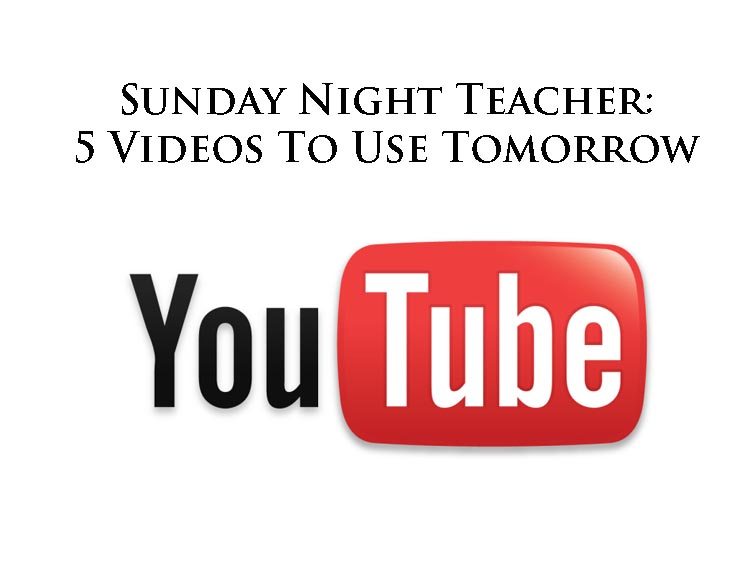So it’s Sunday night.
Maybe you’re looking for some team-building games, or some different ways to start class to shake things up a bit.
You know what you’re going to teach tomorrow (probably), but you’re hoping for something to catch your eye and awaken your muse.
Not sure about your muse, but the videos below might help awaken your students. So tomorrow, fire up YouTube (assuming your sage district IT folks haven’t blocked it) and give them a go. They’re almost all short, flexible for a variety of activities, and probably different than what you were going to do–and different is good, yes?
1. Slow Motion Makes Anything Interesting
Level: K-20
Content Area: Physics, general science, math, English-Language Arts
Uses: Writing prompts, debate topics, problem-solving, brainstorming, QFT sessions, or just show it and don’t worry about “measuring what they learned”

2. Sylvia Plath Reads “Daddy”
Level: 9-20+ (She says the word “bastard.” Probably best for high school. While it can be used in 8th grade, younger students could either be offended, or lose the message distracted by her potty mouth (which Plath means literally, so it’s not really a “bad word”).
Content Areas: English-Language Arts, History, Social Studies, other
Uses: Writing prompt, oral fluency, discussion, or just show it and don’t worry about “measuring what they learned”
3. Fast Math Tricks Of Calculation
Level: 6-12
Content Areas: Math only
Uses: Modeling, explanation, peer-to-peer coaching
4. Assassin’s Creed 4 Trailer
Level: 9-20 (Younger students will probably love it, but it’s a wee bit violent)
Content Areas: English-Language Arts, History, Social Studies
Uses: Writing prompt, oral fluency, discussion, or just show it and don’t worry about “measuring what they learned”
5. A Photo Every Day For 6 Years
Content Areas: All
Uses: Writing prompt, discussion point, cause-effect analyses, patterns and trends, inferential thinking, etc.

6. One Year In 40 Seconds: The Changing Of The Seasons
Level: All
Content Areas: English-Language Arts, Science
Uses: Writing prompt, discussion point, cause-effect analyses, patterns and trends, inferential thinking, etc.



